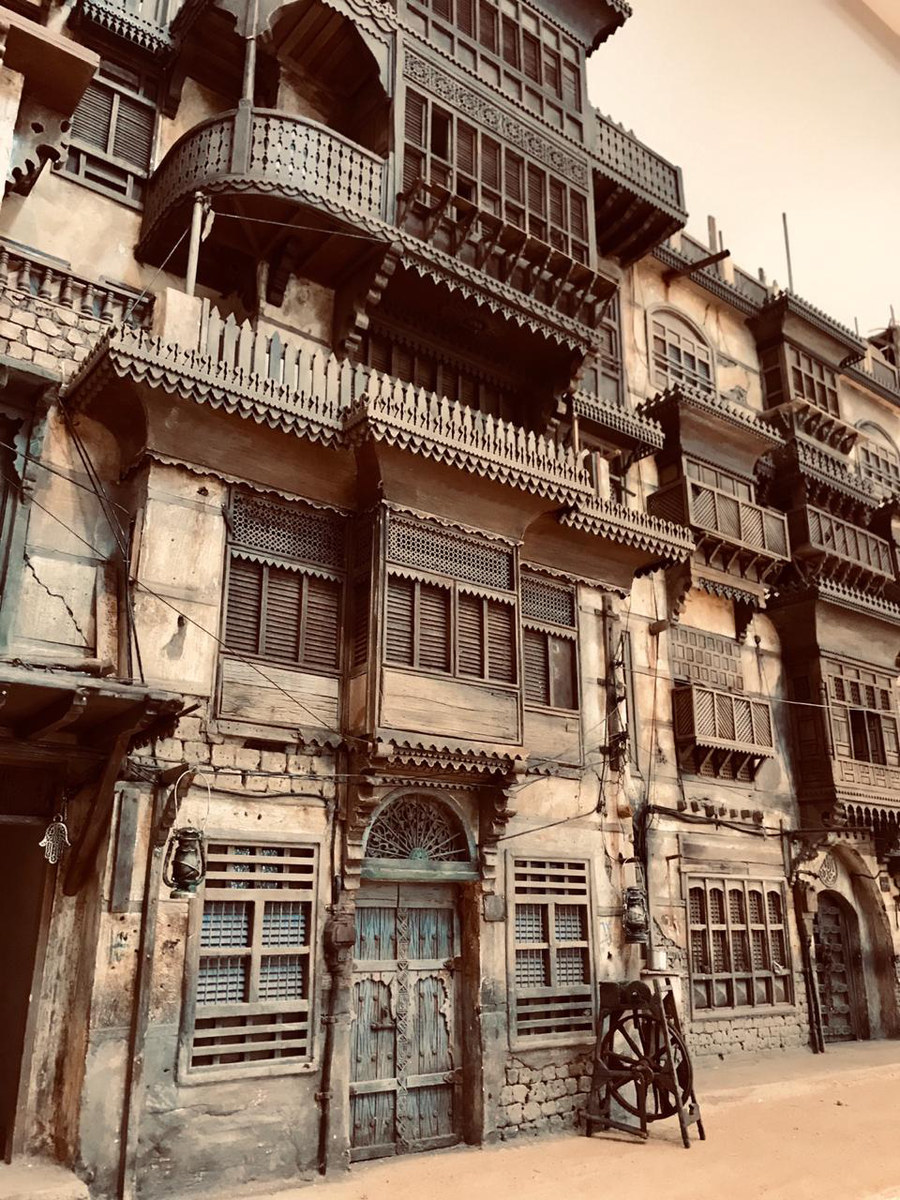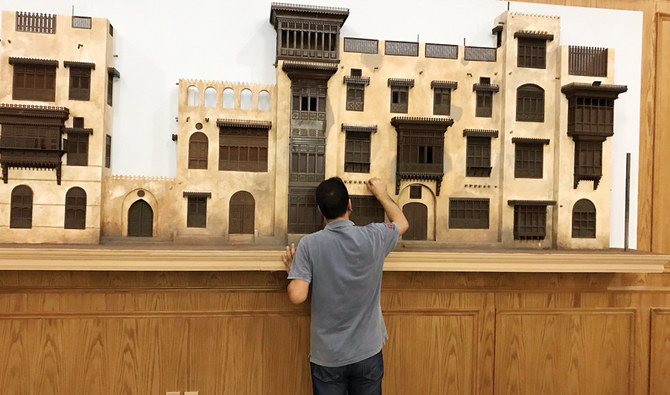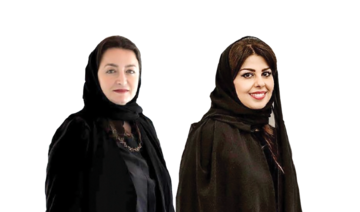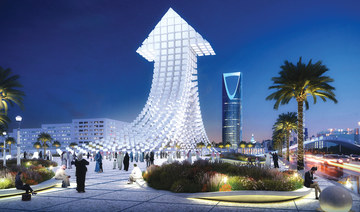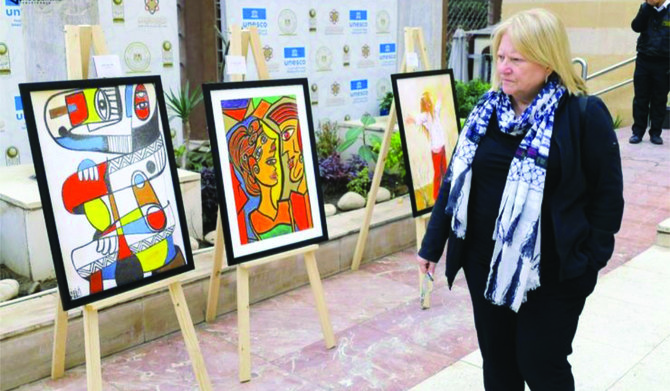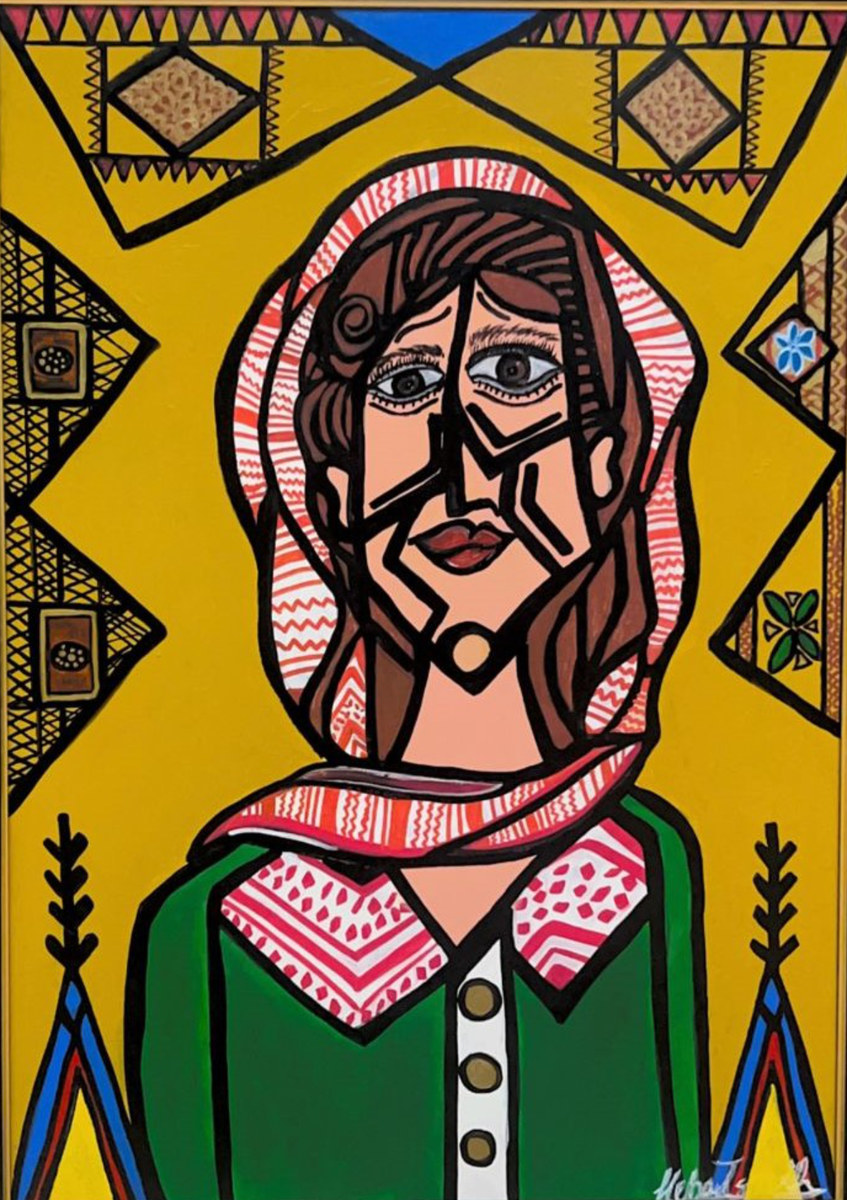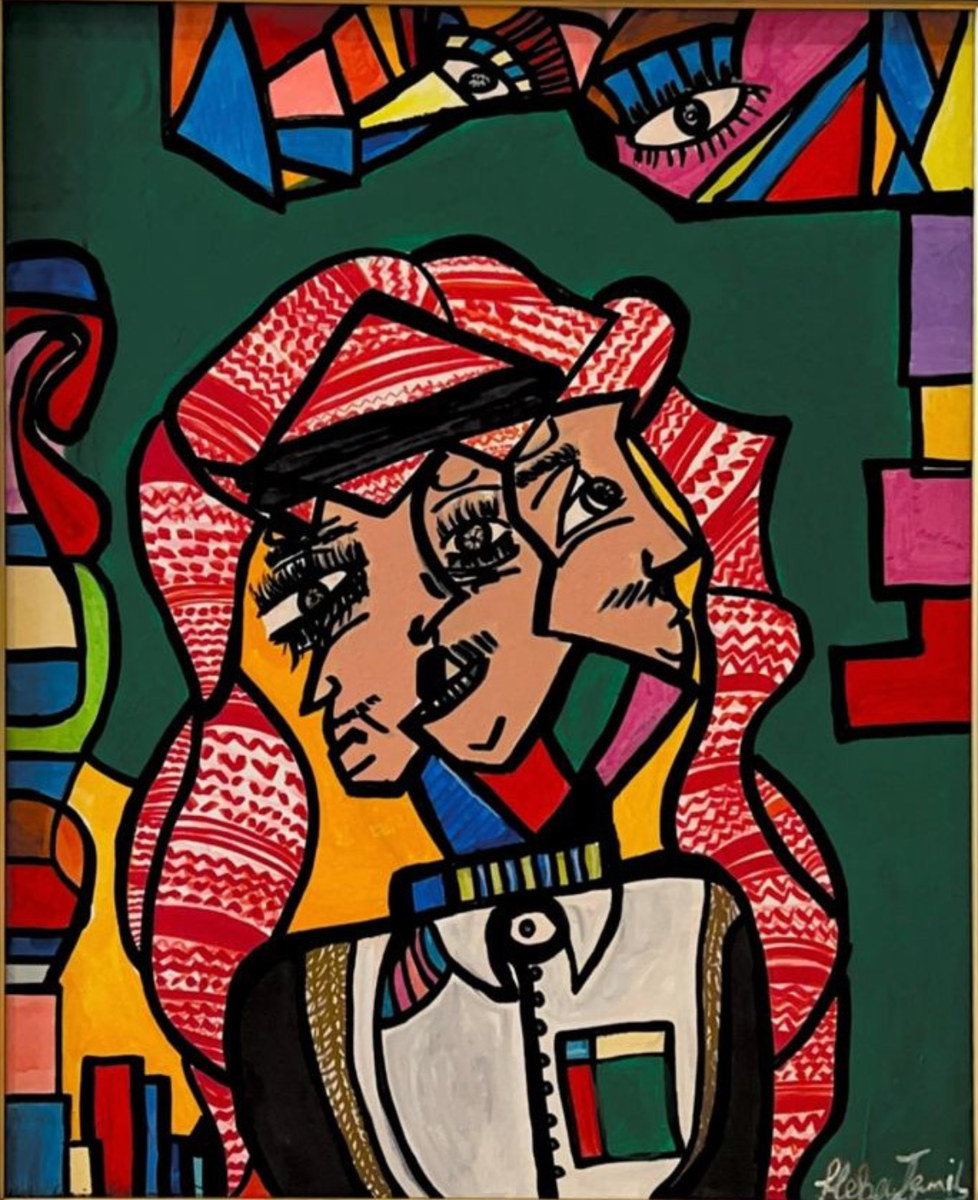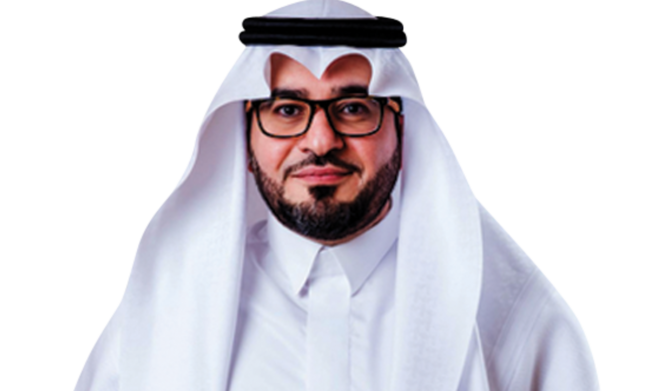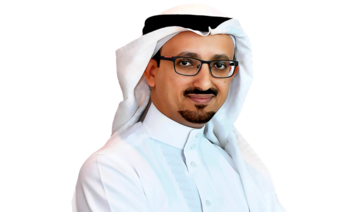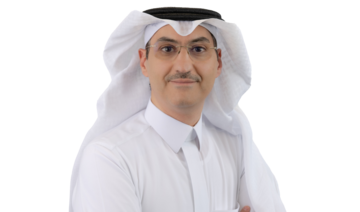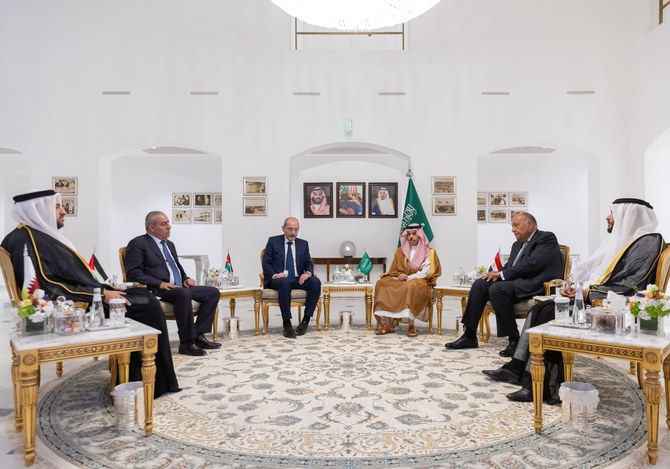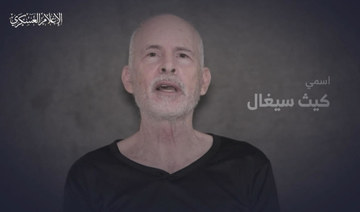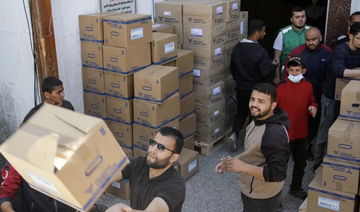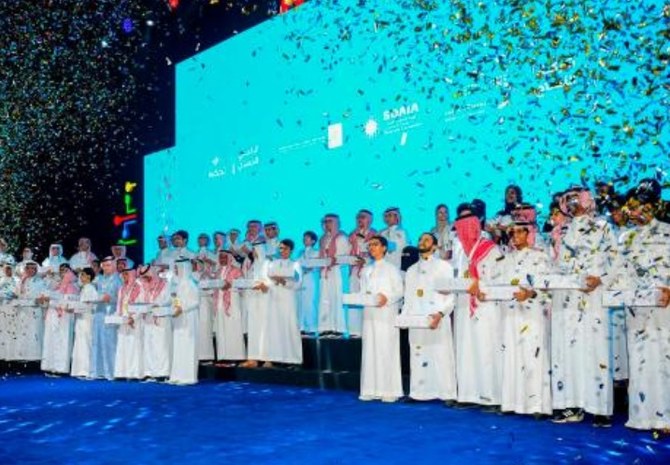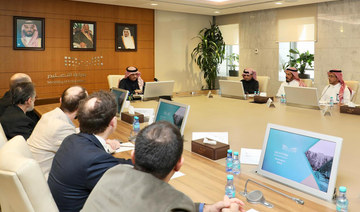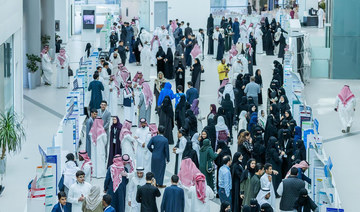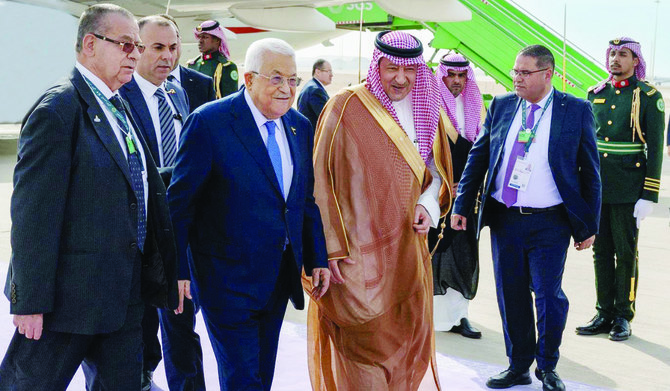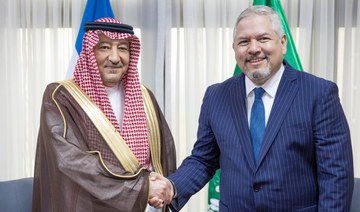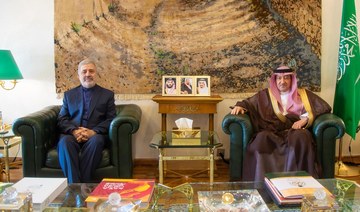JEDDAH: The unique heritage of the historic Jeddah area and the surrounding Hijaz region has long proved fascinating for visitors. That was certainly true for Abdulrahman Eid, a Syrian artist who has lived in the Kingdom for 18 years, and whose work is inspired by Hijazi culture and artistic heritage.
Eid was born in Damascus in 1997. Before moving to Saudi Arabia, he helped restore and renovate historic buildings and works of art, including antiques, manuscripts, and paintings.
He currently works as a jewelry designer in Jeddah, and has plans to share his knowledge with the public through courses and workshops, as he believes jewelry design could and should be much more popular in the Middle East.
Eid first came to Saudi Arabia to work as the director of an exhibition of Eastern and Antarctic at. He said he exhibited some of the work he had produced at Janadriyah’s cultural festival in 2002 and 2003. But between 2003 and 2018, he took a break from making his own artwork.
However, he is now back with a vengeance. His latest creation — a diorama that portrays life in Jeddah in the 1950s, consists of more than 1,700 pieces, which Eid hopes will get him into the record books. His decision to document life in old Jeddah was partly driven, he says, by nostalgia for his homeland, and partly by his wish to acknowledge his appreciation of art.
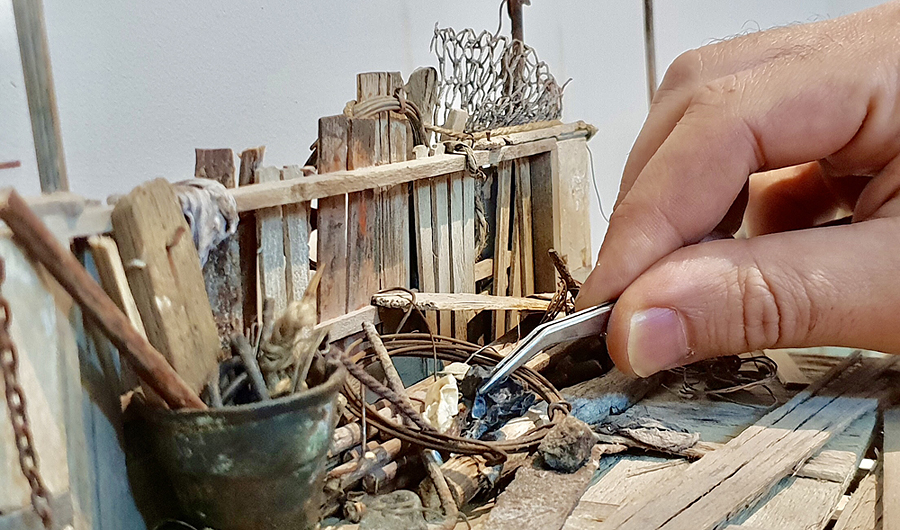
Project
The project, which Eid hopes to finish and present to the public within the next two weeks, has taken the artist more than three years of hard work so far, much of which was spent researching.
“I collected many books and old photographs of various Orientalists and studied how they were documenting the country in the 30s, 40s, and 50s,” he said. Eid found numerous sources through which he could study various historic houses and neighborhoods of old Jeddah, including — of course — walking the streets himself. He cites Noor Wali House, Al-Batarji, Beit Nasif, Al-Matbouli and others as inspirations. However, none of the houses in his artwork are named, or presented as exact replicas of existing buildings.
“Some houses and neighborhoods with important historic value do not exist anymore, and I do not want to diminish any of their value. I collected various elements from different houses and made it into one unnamed neighborhood that imitates the reality of the past,” he said.
Eid’s diorama is 320 cm long, 130 cm high and 45 cm wide. It is full of houses, antique cars and shops — a carpet shop, a silver shop, a copper shop, and a shop for household items, such as pottery.
The intricate miniature pieces in the shops include handmade carpets, hanging lamps, lanterns, old swords and other weapons, old-fashioned household appliances, mirrors, antiques, gifts, and handicrafts of the kind sold to pilgrims. “I tried to integrate all the elements that were there in Hijaz in the past,” he said. “It is more of a documentary artwork.” Staying faithful to his source material, Eid even used precious stones and metals to create the miniature merchandise.
Eid describes his project as “a collection of around 10 types of art, including miniature, diorama, painting, sculpture, formative art, and jewelry design.”
His buildings incorporate the many distinctive decorative styles of traditional Hijazi architecture: panelings, moldings, door shapes, and Rawashin — the carved latticed windows typical of the area. “It contains a huge amount of art that interested the people of the country at that time,” he said of his ambitious project.
Eid said he has benefitted from the knowledge of many people who are familiar with historical Jeddah — including intellectuals, architects, civil engineers and local dignitaries.
“Many people have visited me in my studio and seen the work,” he said. “I’ve made a lot of amendments based on their recommendations. I took their comments into account and restructured the work several times over the past year until I finally reached the version that most closely embodies the reality.”
Eid said the fine and precise nature, and the astonishing variety, of Hijazi arts presented a serious challenge — one that he was keen to embrace. “I found a unique, unparalleled precision and accuracy in Hijazi artistic heritage,” he said. “It is harmoniously composed of rich elements that I have not found in any other regions of the Kingdom.”
Still, he did sometimes worry that he had taken on too big a task. “Sometimes I felt I would not finish it for years,” he said.
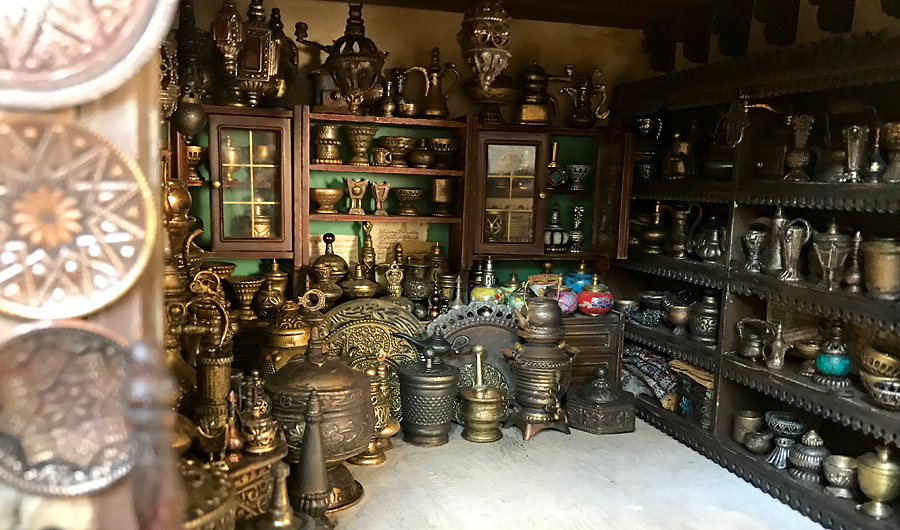
Hijazi culture
Hijazi culture, Eid pointed out, is “cross-cultural.” Jeddah has been the main port for pilgrims for hundreds of years, and as a result, the city and surrounding areas have gained a unique character — possessing the spirit of numerous other cities from both East and West.
Eid claimed that anyone visiting Jeddah’s historic areas would likely see something of their own country there. “I saw something of Syria,” he said.
Over the last fortnight or so, photographs of Eid’s project have been widely shared on social media — with some people mistakenly claiming that the images were off work based on the old cities in Damascus or Cairo.
“I was pleased with what happened,” Eid said. “I received a lot of encouragement and support.”
The Syrian artist said he has had many similar experiences with Damascene architecture when he was working in his homeland. “I have to say, though, that this experience has been more enjoyable, with its challenges, fine details, and richness,” he added.
Eid said he believes recent years have seen an evolving renaissance in the arts in Saudi Arabia, marked by growing interest from the government and the public in the Kingdom’s heritage and its cultural value.
“Saudi Arabia is becoming a fertile environment for young artists to develop,” he said. “The number of galleries has multiplied, and a real movement has begun. I believe this movement in Saudi Arabia will grant the youth diverse opportunities and will raise the standards and the level of competition between them.” Such competition is important to improve artists’ abilities and the quality of art works delivered to the public, he added.
While Eid views the current condition as very healthy, he pointed out that there are many young artists who need financial support if they are really going to fulfill their potential, and that “those who have the financial support still need guidance.”
“Regardless of everything,” he concluded. “I am sure the future is promising.”
